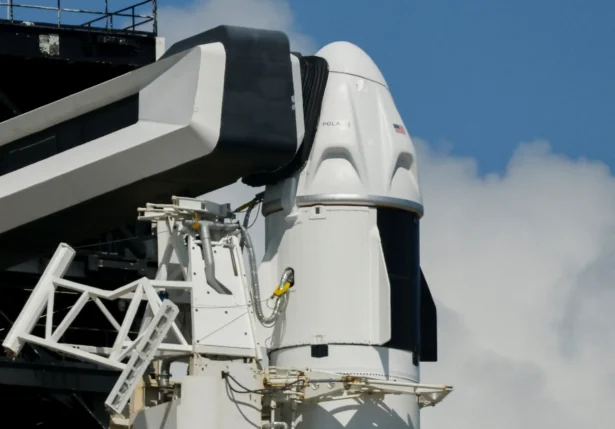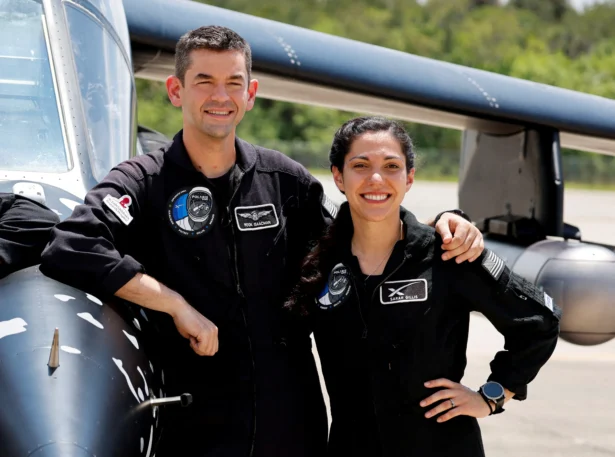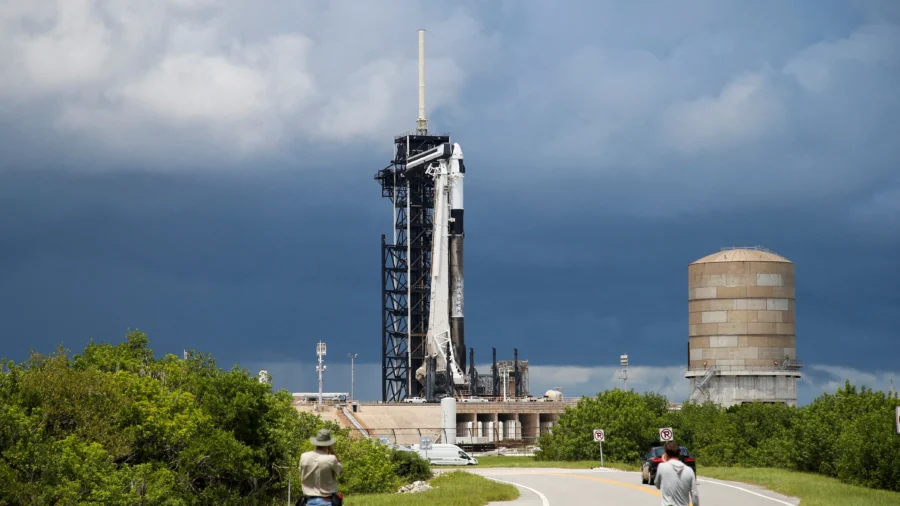SpaceX has delayed its Polaris Dawn mission due to a ground-side helium leak, the company said. The launch from NASA’s Kennedy Space Center in Florida has been rescheduled for Wednesday, Aug. 28, at 3:38 a.m EST.
According to the company, the Falcon rocket and its capsule, Dragon, remain “healthy,” and the crew is on standby.
“While it’s a bummer to not step into a launch attempt tonight, I’m very proud of the team for identifying an issue and then digging in,” said Kiko Dontchev, VP of Launch at SpaceX.
“Nothing is more important than the safety of our astronauts and the reliability of our vehicles and operation.”
The Polaris Dawn mission is a project led by billionaire Shift4 CEO Jared Isaacman in collaboration with SpaceX. It aims to conduct history’s first-ever commercial spacewalk and send its crew farther from Earth than any other mission since Apollo 17 in 1972.

“More time in quarantine to prepare is never a bad thing,” Isaacman said on X. “It’s immensely comforting to have the full support of @SpaceX & leadership, including Elon, ensuring mission’s safety.”
The launch will send Isaacman and his crew of three—Sarah Gillis, Scott Poteet, and Anna Menon—into a highly elliptical orbit that will take them approximately 870 miles from the Earth’s surface.
As part of the five-day mission, the crew will study the effects of space radiation on the human body as its high orbit takes them through parts of the Van Allen radiation belt.
The team will conduct 36 research studies and experiments from 31 partner institutions focused on advancing human health on Earth and during long-duration spaceflight.
The most sensational feat comes later in the mission when Isaacman and Gilles exit the Dragon capsule and perform the first commercial spacewalk in human history.

For the excursion, Space X developed its own spacesuit, which uses new materials and novel joint designs that provide greater mobility to astronauts. The suit also features a 3D-printed helmet with a state-of-the-art visor to reduce glare.
“An incredible amount of work has gone into this historic mission by an amazing team,” said SpaceX CEO Elon Musk on X. “We are triple-checking everything to make sure there is nothing more we can do to improve crew safety.”
Isaacman was confident that the issue would be resolved. “When the call comes, we won’t hesitate to strap in,” he said on X.
This will be Isaacman’s second mission in space after he funded SpaceX’s Inspiration4 mission, which raised over $250 million for St. Jude Children’s Research Hospital in 2021. The Polaris Dawn mission will also raise funds for the children’s hospital.
Polaris Dawn is the first of three human spaceflights under the Polaris Program.
“Throughout our mission, we will aim to inspire humankind to look up and imagine what we can achieve here on Earth and in the worlds beyond our own,” Isaacman wrote when the launch was officially announced on Aug. 19.

